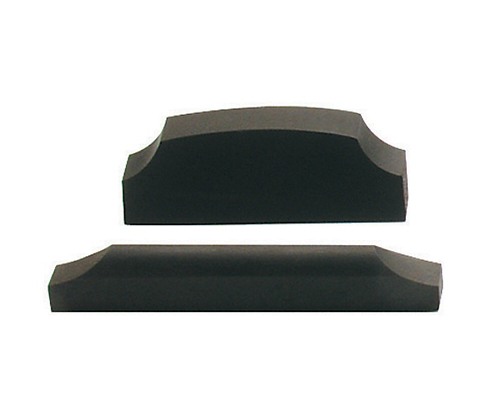How Important the Violin Nut And Saddle for Setup

Within the intricate world of violin setup, the nut and saddle are two small yet indispensable components that significantly impact the instrument’s playability and overall performance. These vital pieces, located at the top and bottom of the violin’s fingerboard, respectively, influence critical aspects such as string height, intonation, and tonal quality. In this SEO blog, we will explore the importance of the Violin Nut and Saddle in setup, highlighting their role in achieving optimal string height, intonation, and overall playability.
- String Height and Action
The Violin Nut and Saddle are instrumental in determining the string height or action of the violin. The nut, situated at the top of the fingerboard, sets the height of the strings near the pegbox. The saddle, located at the bottom of the instrument’s body, governs the string height at the bridge. Properly adjusted nut and saddle heights ensure comfortable playability by facilitating ease of fingering and bowing, while maintaining adequate string clearance to prevent buzzing or unwanted contact with the fingerboard.
- Intonation and Pitch Accuracy
Accurate intonation is crucial for achieving harmonious and in-tune playing. The violin nut and saddle contribute significantly to intonation by determining the precise length of the vibrating string. Correctly positioned nut slots and saddle notches ensure that each string’s speaking length is accurate, allowing the violinist to produce the correct pitch at each finger placement. This attention to intonation is essential for achieving a cohesive sound when playing melodies, chords, or in ensemble settings.
- Tonal Quality and Resonance
The violin nut and saddle also impact the tonal quality and resonance of the instrument. They serve as contact points for the strings, transmitting vibrations from the strings to the violin’s body. A well-fitted and properly carved nut and saddle optimize the transfer of vibrations, allowing for enhanced sustain, clarity, and richness of sound. The choice of materials, such as bone, synthetic materials, or various woods, can further influence the tonal characteristics produced by the nut and saddle.
- Expert Setup and Adjustment
Achieving optimal violin nut and saddle setup requires expertise and precision. Qualified luthiers and violin technicians possess the knowledge and skill to assess and adjust the nut and saddle heights, ensuring they are properly fitted and carved to optimize performance. Regular maintenance, such as filing nut slots, smoothing saddle notches, and periodic adjustments, can help maintain ideal string height and intonation.
- Individualized Setup and Tailoring
Every violinist has unique playing preferences and requirements. The violin nut and saddle setup can be tailored to suit individual needs, allowing for customization based on playing style, hand size, and personal comfort. A luthier can work closely with a violinist to ensure that the nut and saddle are adjusted and shaped to provide the best possible playing experience and optimize the instrument’s performance.
Conclusion
The violin nut and saddle are essential components of violin setup, playing a vital role in achieving optimal string height, intonation, and playability. Their impact extends beyond functionality, influencing tonal quality and resonance. With expert setup and regular maintenance, violinists can ensure that their nut and saddle are finely tuned to enhance their playing experience and unleash the full potential of their instrument. Embrace the importance of the nut and saddle in violin setup and embark on a journey of enhanced playability, tonal quality, and musical expression.

Leave a Reply